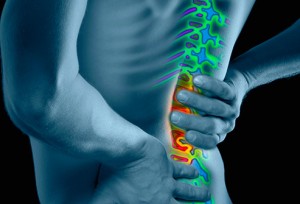Pain that persists for longer than 6 months is referred to as chronic pain (Keefe, 1982). Unrelieved chronic pain can cause considerable suffering, physical limitations, and emotional distress (Turk, 1996). Further, chronic pain is one of the most common reasons for seeking medical care but often persists despite treatment with analgesics and physical modalities. For example, epidemiologic studies indicate that approximately 11% to 45% of individuals in the United States experience chronic back pain (LeResche & Von Korff, 1999), 75% of patients with advanced cancer suffer persistent pain (Bonica, 1990), and chronic pain is the most common reason for the use of complementary and alternative therapies (Astin, 1998; Eisenberg et al., 1993).
(Turk, 1996). Further, chronic pain is one of the most common reasons for seeking medical care but often persists despite treatment with analgesics and physical modalities. For example, epidemiologic studies indicate that approximately 11% to 45% of individuals in the United States experience chronic back pain (LeResche & Von Korff, 1999), 75% of patients with advanced cancer suffer persistent pain (Bonica, 1990), and chronic pain is the most common reason for the use of complementary and alternative therapies (Astin, 1998; Eisenberg et al., 1993).
Interest in hypnosis for pain management has increased with recent evidence that hypnosis can reduce pain (and costs) associated with medical procedures (Lang et al., 2000), and there are now an adequate number of controlled studies of hypnosis to draw meaningful conclusions from the literature regarding chronic pain (Jensen & Patterson, 2006; Montgomery, DuHamel, & Redd, 2000; Patterson & Jensen, 2003).
Hypnosis in the treatment of chronic pain generally, but not always, involves a hypnotic induction with suggestions for relaxation and comfort. Posthypnotic suggestions may be given for reduced pain that can continue beyond the session or that the patient can quickly and easily create a state of comfort using a cue (i.e., taking a deep breath and exhaling as eye lids close). The focus of hypnosis in the treatment of chronic pain also often involves teaching the patient self-hypnosis or providing tape recordings of hypnosis sessions that can be used to reduce pain on a daily basis outside the sessions. Some patients experience an immediate reduction in pain severity following hypnosis treatment, whereas others can obtain reduction in pain with repeated practice of self-hypnosis or hypnosis sessions.
A recent study compared the effectiveness of hypnosis and Jacobson relaxation for the reduction of osteoarthritis pain. Thirty-six patients with osteoarthritis pain were randomly assigned to one of three conditions: hypnosis, relaxation training, and a no-treatment/standard-care control condition. The hypnosis intervention consisted of eight weekly sessions that began with a standard relaxation induction followed by suggestions for positive imagery, as well as a memory from childhood that involved joint mobility. The subjects in the standard-care control condition were administered the outcome measures and were offered treatment after their last follow-up assessment. Patients in the hypnosis treatment showed a substantial and significant decrease in pain intensity after 4 weeks of treatment, which was maintained through 3 months and 6 months of follow-up. In comparison, patients in the no-treatment control condition reported little change in pain during the 6 months of this trial.
In addition to being of proven benefit in the management, control and reduction of chronic pain, Hypnotherapy has the added benefit of being entirely free of any side effects.